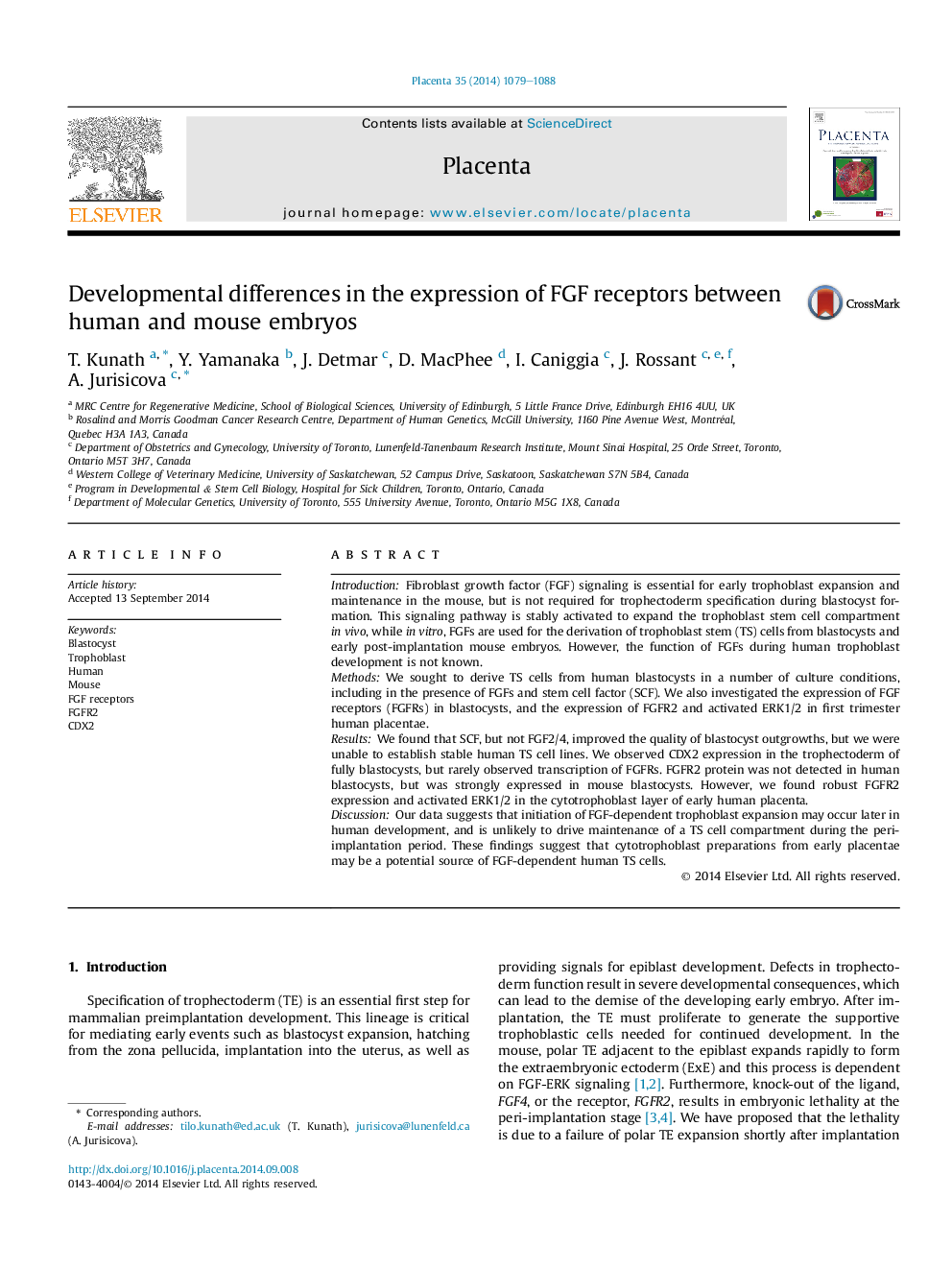| کد مقاله | کد نشریه | سال انتشار | مقاله انگلیسی | نسخه تمام متن |
|---|---|---|---|---|
| 5895074 | 1154446 | 2014 | 10 صفحه PDF | دانلود رایگان |

- Stem cell factor (SCF), but not FGF, improved outgrowths of human blastocysts.
- Mouse TS cell derivation conditions do not work for human blastocysts.
- CDX2 is specifically expressed in the nucleus of all human trophectoderm cells.
- FGF receptors were not easily detected in human blastocysts.
- FGFR2 and activated ERK1/2 are robustly expressed in early first trimester human placenta.
IntroductionFibroblast growth factor (FGF) signaling is essential for early trophoblast expansion and maintenance in the mouse, but is not required for trophectoderm specification during blastocyst formation. This signaling pathway is stably activated to expand the trophoblast stem cell compartment in vivo, while in vitro, FGFs are used for the derivation of trophoblast stem (TS) cells from blastocysts and early post-implantation mouse embryos. However, the function of FGFs during human trophoblast development is not known.MethodsWe sought to derive TS cells from human blastocysts in a number of culture conditions, including in the presence of FGFs and stem cell factor (SCF). We also investigated the expression of FGF receptors (FGFRs) in blastocysts, and the expression of FGFR2 and activated ERK1/2 in first trimester human placentae.ResultsWe found that SCF, but not FGF2/4, improved the quality of blastocyst outgrowths, but we were unable to establish stable human TS cell lines. We observed CDX2 expression in the trophectoderm of fully blastocysts, but rarely observed transcription of FGFRs. FGFR2 protein was not detected in human blastocysts, but was strongly expressed in mouse blastocysts. However, we found robust FGFR2 expression and activated ERK1/2 in the cytotrophoblast layer of early human placenta.DiscussionOur data suggests that initiation of FGF-dependent trophoblast expansion may occur later in human development, and is unlikely to drive maintenance of a TS cell compartment during the peri-implantation period. These findings suggest that cytotrophoblast preparations from early placentae may be a potential source of FGF-dependent human TS cells.
Journal: Placenta - Volume 35, Issue 12, December 2014, Pages 1079-1088